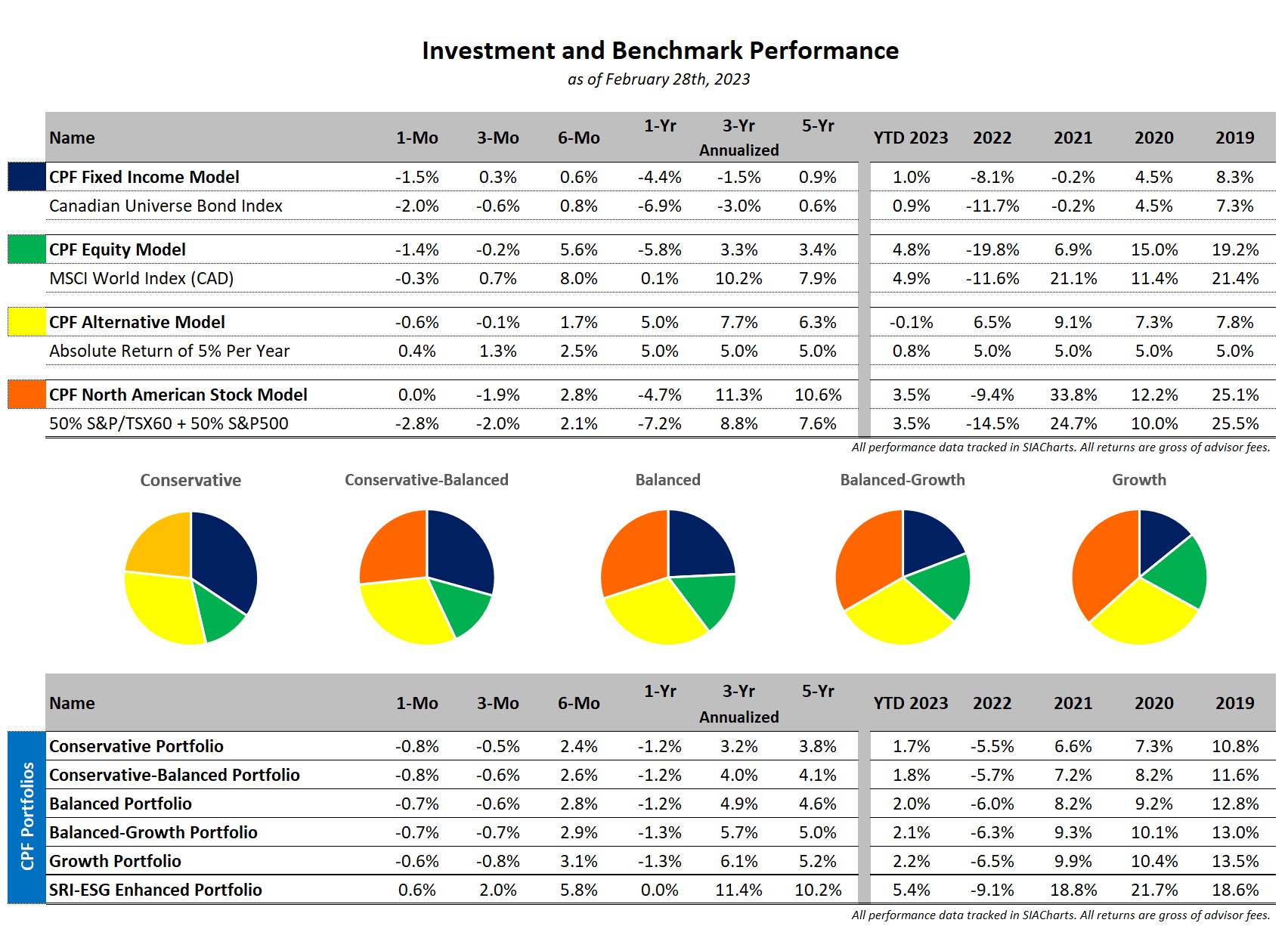Strong Spend on Luxury
February 2023 Commentary & Performance Review
French stocks, particularly luxury goods producers LVMH, Kering, and Hermes International, have emerged as the breakout stars of 2023. Investors are betting that the sales and earnings of these luxury companies will remain robust now that China has reopened for business again. Although concerns are creeping in that luxury goods stocks are becoming too expensive, fund managers are still optimistic that the gains for the broad market have further to go, particularly within the financial and industrial sectors.
Canadian consumer price pressures eased in January, with the consumer price index rising by 5.9% from a year ago, compared to the expected 6.1% increase, giving the Bank of Canada some room to hold interest rates at current levels. The deceleration in inflation suggests policymakers have raised rates enough to restrain price gains, supporting their decision to pause an aggressive rate‐hiking cycle, at least in the near term. While inflation remains well above the Bank of Canada’s 2% target, the data suggests that 425 basis points of interest‐rate hikes in 11 months are starting to temper price gains.
Natural gas prices have fallen over 65% since mid‐December and have hit their lowest level since 2020’s pandemic lockdown. This drop in price has led producers to scale back drilling, as the market for heating and power‐generation fuel has turned dramatically. Expensive natural gas was a major contributor to inflation over the past two years, but consumers and companies that use natural gas are expected to benefit from lower prices.
South Korea’s fertility rate has dropped to 0.78 per woman, the world’s lowest. The lack of babies is commonplace in developed countries including Canada and could have long-term economic risks by reducing the size of the workforce, which underpins the country’s growth and vitality. Korea’s leaders have increased spending to encourage people to have more children, and the government has adopted policies geared towards an aging population, including enhancing living conditions for retirees, accelerating robot adoption, and inviting more foreigners into the workforce. High education and housing costs are among other factors putting pressure on fertility.
Canada’s top banks are expected to report their largest profit decline in over two years as they face rising taxes, higher regulatory capital requirements, and the threat of a recession. The net income of the six largest banks is projected to fall 15% in the fiscal first quarter, with the need to hold more capital and pay higher taxes contributing to the decline. This will dampen loan and earnings‐per‐share growth and return on equity. The banks are also expected to set aside $1.83 billion in provisions for credit losses. However, higher interest rates and a rebound in equity markets may help bolster the banks’ fee-generating wealth‐management and capital‐markets divisions.
The US is reportedly preparing to impose a 200% tariff on Russian‐made aluminum to keep pressure on Moscow ahead of the one‐year anniversary of the invasion of Ukraine. President Joe Biden has yet to give official approval, and concerns have been raised about collateral damage on US industries, including aerospace and automobiles. Russia is the world’s second‐largest aluminum producer and has been accused of dumping supplies on the US market and harming American companies.
Portfolio Contributors
- Canadian Tire Ltd (CTC.A) rallied 7.52% after reporting higher than expected earnings and revenue for Q4 2022.
- Shares of Apple Inc (AAPL) closed 2.32% higher as analysts digested their earnings announcement. Although revenue fell, margins remained intact.
Portfolio Detractors
- Fixed income securities within Steadfast Income Pool (MAJ383) struggled during the month as the market adjusted to higher rate expectations, closing 1.52% lower.
- Precious metals fell as the US Dollar climbed, with Ninepoint Gold Bullion (NPP226) falling 2.89%.
All returns are for the reported month and in local‐currency.
All data sourced from SIACharts and FACTSET.


